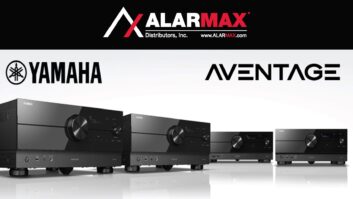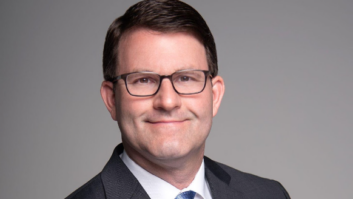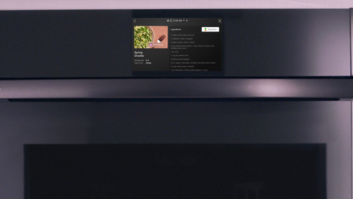MARTA Cooperative of America celebrated its 40th anniversary with a bang during its annual winter meeting and convention at the Gaylord Palms here earlier this month, adding 12 new members, reporting sales of $2.1 billion and outlining aggressive new strategies, while preaching the virtues of independent retailing.
The 12 new members are the most MARTA has ever signed on at one time, said executive director Warren Mann. The new members are either converts from other buying groups or are relatively new companies that have never belonged to a buying group before, Mann said. (See story, p. 24)
During the gathering, Mann outlined the group’s aggressive strategy when it comes to carrying brands and dealing with national competitors. Mann said that the brands the group has now partnered with “are brands with value, such as Frigidaire, Toshiba, JVC, Amana and Fisher & Paykel. Sharp is friendly towards independents and Thomson treats us, MARTA, as one entity when selling to us.”
He said that MARTA’s members “have their life savings invested in their companies. They can build and maintain brands. But we need good, profitable products to sell.”
Addressing vendors attending the show, Mann reviewed the events of the past few years in electronics/appliance retailing. “A few years ago it was the retailers experiencing much of the pain,” he recalled. “Many top local chains went out of business, never to return. Now retailers are doing fine, but the pain seems to have switched to you guys in the past year or two.”
Mann discussed the executive turnover at many electronics and major appliance companies and the various reorganizations that have occurred. He blamed many of their problems on vendors relying too heavily on national chains to sell their products. Mann said that five years ago, MARTA’s average cost for certain electronics and appliances “have all become retail prices today. That means we have shed 25 percent of margins at retail since 1999. Manufacturers have borne the brunt of this change.”
He emphasized that the “salvation of certain brands depends upon not selling to big chains exclusively. The philosophy of some manufacturers seems to be ‘Well, we can’t give up market share to the competition.’ So many vendors sacrifice profitability. They are motivated by fear.”
Some vendors have built, or try to rebuild their brand name by selling independents, Mann said. “Then they take [much of their sales volume] to national chains. These brands still resonate with consumers, but due to your distribution, you are getting less margins for them.”
Mann stressed, “The profit problem for manufacturers, so ruinous in the past five years, has not been caused by pesky, small dealers. These guys are the shining stars for brands, selling technology, selling new ideas and selling up.”
And he continued, “The fast-turning, write-a-huge-order, cost-efficient shipping, simple business dealers who trade in only one common commodity — low price — are the perpetrators sucking the nutrition out of your financial reports.”
Mann told the attending manufacturers that independent retailers “are your brand builders! We will be fine,” if some vendors go away from independent retailers. “But you guys? I don’t know. The people who have predicted the demise of small dealers are absolutely wrong.”
He added, “The red-ink of manufacturers should tell you that you should not exclude [independents]. Give us robust margins so we can do what we do best, namely train sales people to educate consumers, highlight better goods on the selling floor and expose our customer base to enriched alternatives.”
To his members, Mann was equally as pointed about how to attack national chains in majaps and CE. “National self-service retailers provide wide selection, low prices, financing, gifts and a ‘fun atmosphere,'” he said. “Still, there are ways for independents to compete.” Mann then outlined the following suggestions for members’ appliance businesses, although they probably apply equally well for electronics:
- Minimize store brands (“The self-service guys rely on you to sell certain brands,” Mann said.)
- Eliminate shared SKUs
- Attack leader models (“You must have a response to what national chains do,” he said. “Show leaders, but use your trained sales force to ‘sell up.'”)
- Increase your product knowledge (“Consumers are more knowledgeable through Web research, so you have to make sure your sales staffs are better trained and provide more information to differentiate your stores from the competition,” Mann noted.)
- Out-deliver the competition
- Out-service the competition (“That’s the last touch point for your company on a sale,” he said. “Leave a good impression.”)
- Promote premium categories and products (“Some self-service retailers don’t have the merchandise in that area.”)
- Refresh your stores (“Offer alternatives and make it easy and enjoyable for your customers to shop,” he suggested.)
In electronics, Mann specifically suggested that members employ package selling, or what he called “turnkey home theater,” and emphasize premium sub-brands MARTA carries, such as Toshiba Cinema Series and Thomson Scenium.
The policies seem to be working. Mann told TWICE that for his group, “the premium sector of appliances is rock solid. We don’t sell leader models. We will show them, then try to sell the customer on the premium product’s features.”
In electronics, MARTA is very excited about HDTV’s potential this year. “We are at the edge of an avalanche of demand from those who will want HDTV. Consumer demand should accelerate dramatically this year, but it hasn’t happened yet.”












